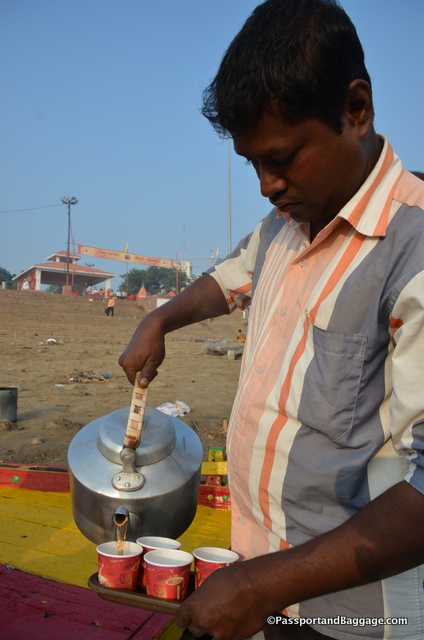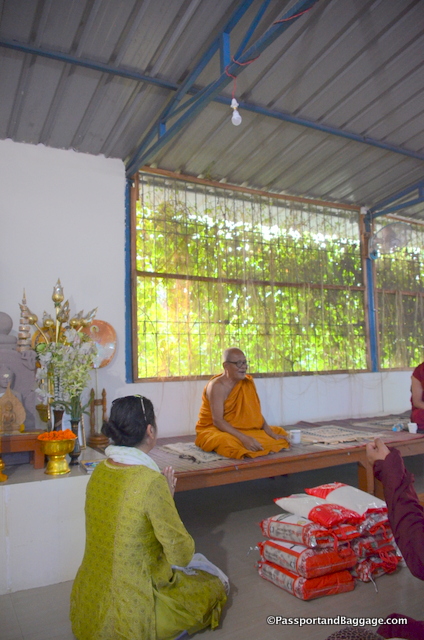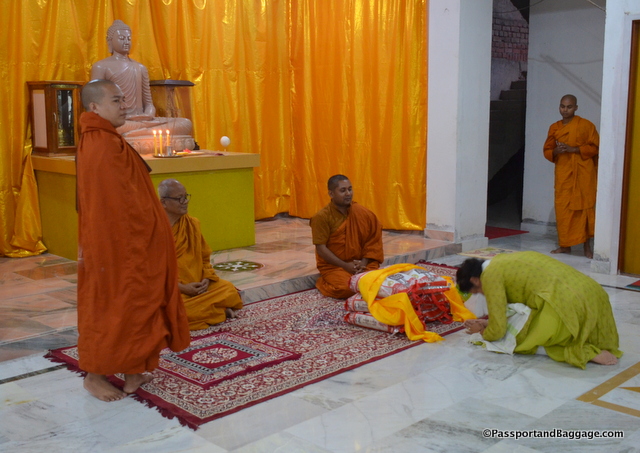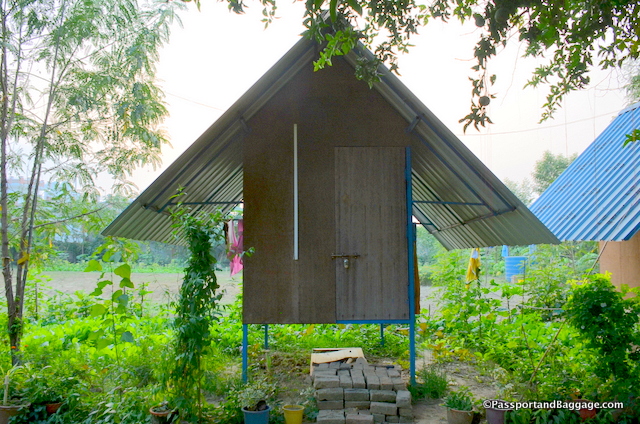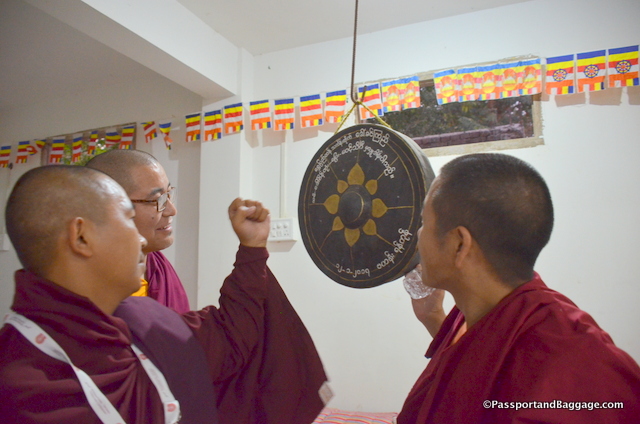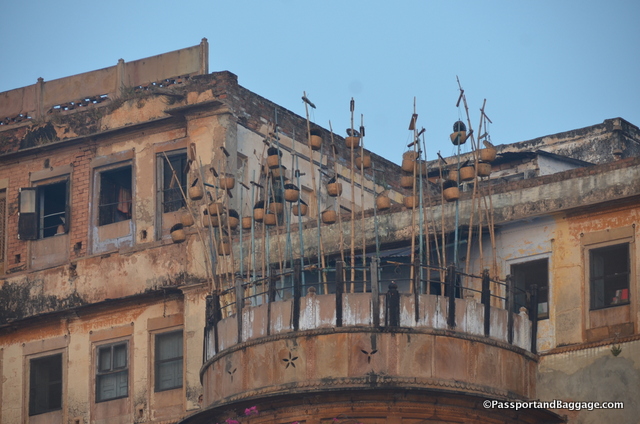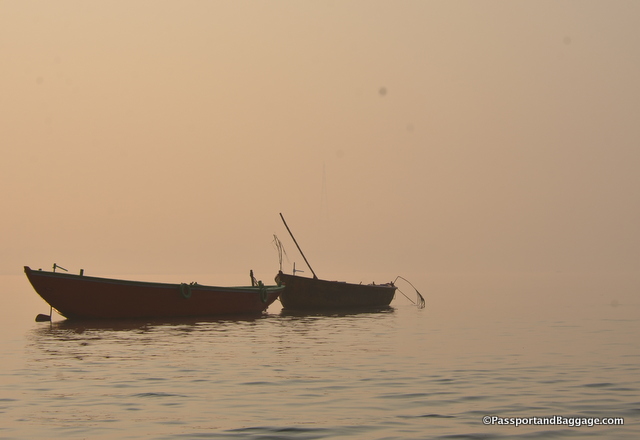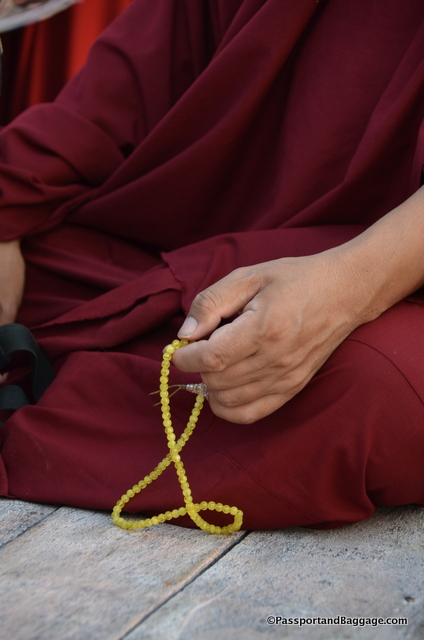Sarnath Day 2
November 2017
Day two was a day of fun and relaxation. We rose at 5:00 in the morning to go for a river ride on the Ganges. I have done this trip before and if you are interested in photos and history please click here. This trip was all about the monks.
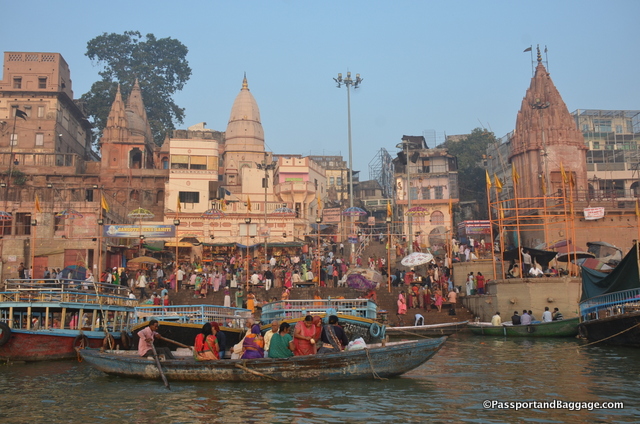 It started out quietly, the Ganges is foggy and smoggy in the morning, and the beggars are intense, so if you are not used to morning on the Ganges it can be intimidating.
It started out quietly, the Ganges is foggy and smoggy in the morning, and the beggars are intense, so if you are not used to morning on the Ganges it can be intimidating.
We boarded two boats and headed out into the fog with the motors roaring loudly in a put-put kind of way.
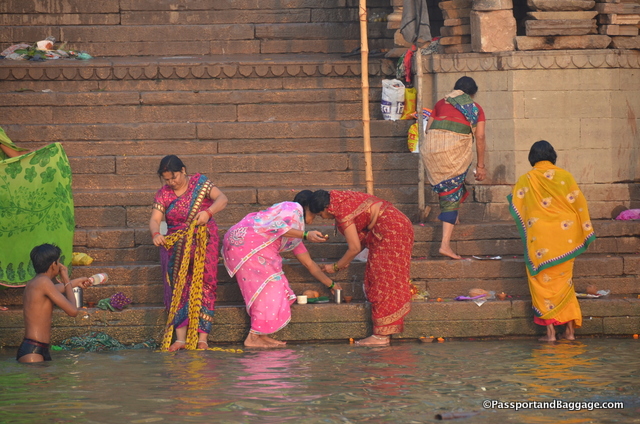 It is a long slow saunter down river passing many sites not usual to the western eye. It is very common for people to bathe in the Ganges and that is the hardest to understand when you look down and see how terribly polluted the river is.
It is a long slow saunter down river passing many sites not usual to the western eye. It is very common for people to bathe in the Ganges and that is the hardest to understand when you look down and see how terribly polluted the river is.
 There is the launderer’s, not only the men beating the laundry on stones in the river but the clothes and sheets spread out to dry.
There is the launderer’s, not only the men beating the laundry on stones in the river but the clothes and sheets spread out to dry.
Then, of course, there is the reason for present-day Varanasi, it is one of the most prominent sites for cremation. Varanasi is the place every Hindu hopes to be when he or she dies so they can escape the cycle of rebirth and death. If a person dies in the Ganges or has Ganges water sprinkled on them as they breathe their last breath it is believed they will achieve absolute salvation. I never photograph the cremation sites as I believe they are holy and should be honored when the boat passes by.
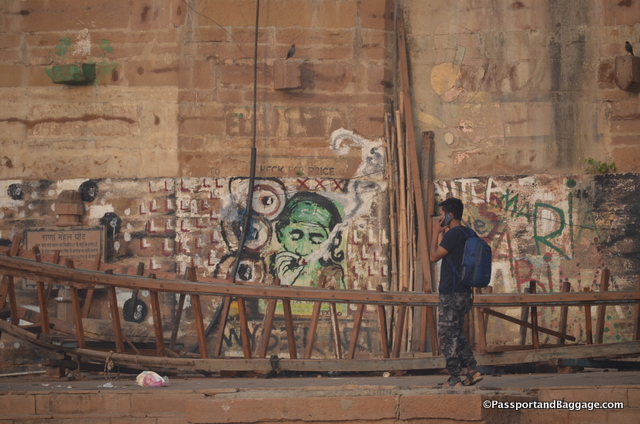 I instead love to find the graffiti, there is no graffiti in India to speak of, so to capture it along the Ganges is fun.
I instead love to find the graffiti, there is no graffiti in India to speak of, so to capture it along the Ganges is fun.
By the time we stop for tea we are intermingling a little bit more than when we started, but a turn to the other shore changes it all.
We get off on the other shore and there we put our toes in the sand, but more importantly, there are camels and horses for riding.
This may be the first time some have seen a camel, and two took rides, THAT is what really broke the ice. When we returned to the boats I instantly saw those that did have English begin to introduce themselves to others they did not know and strike up conversations.
There wasn’t a sea change, but it was a start.
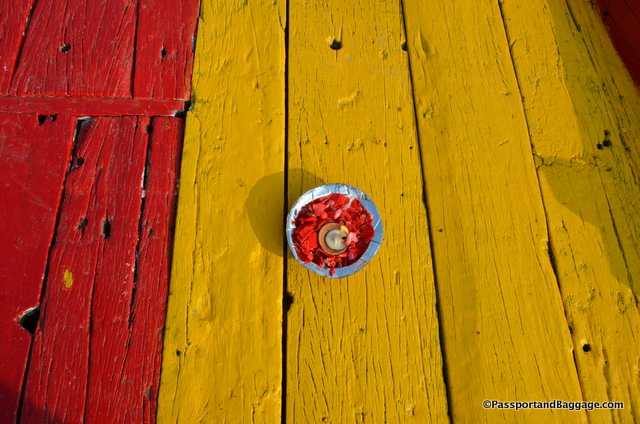 When on the Ganges you can buy small candles, surrounded by flowers to place in the river to carry your prayers. The monks chanted, and we all placed our candles into the water.
When on the Ganges you can buy small candles, surrounded by flowers to place in the river to carry your prayers. The monks chanted, and we all placed our candles into the water.
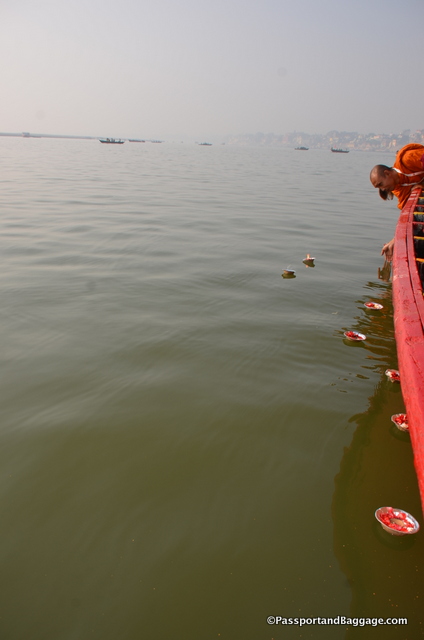 The monks then practiced a “Life Releasing Ritual” which involves releasing fish, (purchased onshore), into the Ganges. The main purpose of this practice is to save lives that are in danger and to pray for their ultimate Enlightenment as well as for that of all sentient beings.
The monks then practiced a “Life Releasing Ritual” which involves releasing fish, (purchased onshore), into the Ganges. The main purpose of this practice is to save lives that are in danger and to pray for their ultimate Enlightenment as well as for that of all sentient beings.
 After lunch we visited the Mulagandha Kuti Vihara Monastery I don’t know if this was an auspicious day due to the full moon, or they open the relic room once a week, but we had a chance to enter the relic room and gaze at a “piece” of the Buddha. I am rather certain there are as many parts of the Buddha around the world as there are parts of Christ.
After lunch we visited the Mulagandha Kuti Vihara Monastery I don’t know if this was an auspicious day due to the full moon, or they open the relic room once a week, but we had a chance to enter the relic room and gaze at a “piece” of the Buddha. I am rather certain there are as many parts of the Buddha around the world as there are parts of Christ.
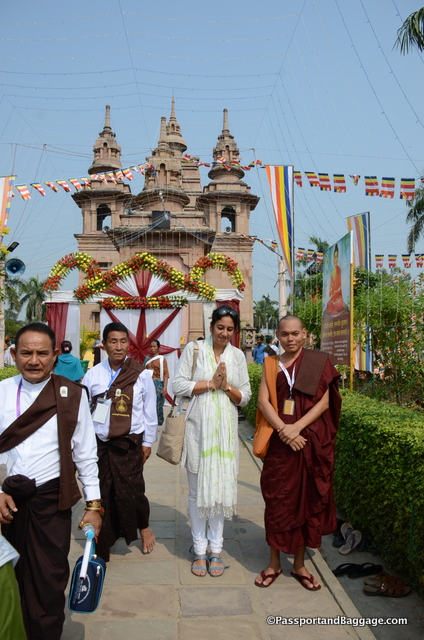
The joy of traveling with the monks is we cut in front of the line, it appeared people had been waiting up to an hour to get in to see the relic.
The Tipitaka Ceremony in Sarnath was aided by two Buddhist communities in Sarnath, so the afternoon was spent visiting their temples and offering them rice and oil to thank them for their help. One was a Thai temple and the other a local Indian temple.
At the Thai temple, I saw a very small building set on stilts, I asked one of the monks what it was (after he had peeked in the door). He said it was a monks room, and how this is what they should be like. He commented how time had given monks many advantages, I don’t think he wanted his small luxuries taken away, but he did acknowledge that they no longer lived as spartan as the Buddha.
The evening wrapped up back at SINI with an incredible ceremony consisting first of a female chanter, chanting in the temple, followed by a sitar concert in the outdoor courtyard.
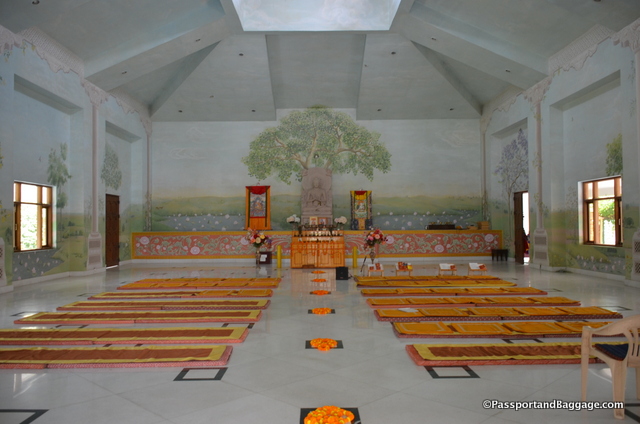
The Temple at SINI. The walls are completely covered with murals by Kaveri Singh. Each tree is different and represents a period in Buddha’s life.
An amazing cultural day filled with very surprising moments.
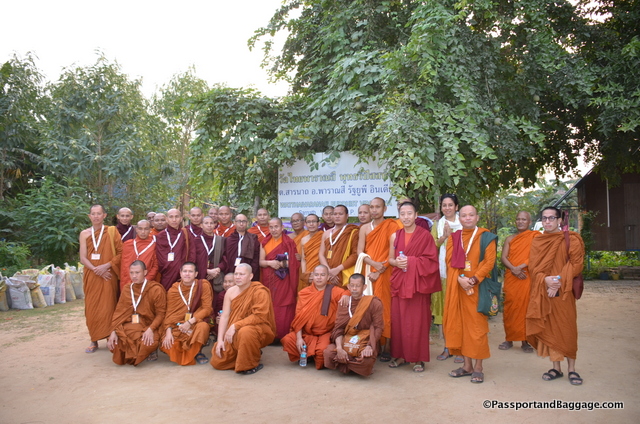
Everywhere we go there are more cameras than you can imagine, and the words GROUP PHOTO are uttered constantly
When I took the above photos I said 1-2-3 and then said they must all teach me 1-2-3 in their language. So far I have learned it in Burmese and Thai, fortunately, Hindi is similar to Thai. I am trying to learn one word a day in one of the three languages, my brain is mush already and I only have numbers done at this point. – Wrapping my tongue around southeast Asian languages is a real challenge.
